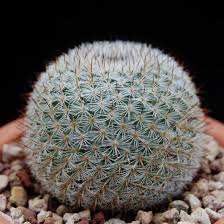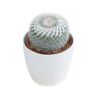The Story of Bronze Statues in Feng Shui: Their Symbolism, Purpose, and Influence

Feng Shui, an ancient Chinese practice that focuses on harmonizing individuals with their surroundings, is deeply rooted in the belief that the energy, or Qi, flows throughout the environment. To achieve harmony and balance in our living or working spaces, various elements, such as colors, shapes, materials, and symbols, are carefully selected. Among these, bronze statues hold a particularly important place due to their unique symbolic meanings, their association with prosperity, health, and protection, and their ability to influence the flow of energy in a space.
In this article, we will explore the fascinating world of bronze statues in Feng Shui. We’ll delve into their historical significance, their role in Feng Shui, and how they can be used effectively to enhance the flow of energy in various areas of life. Additionally, we’ll explore the different types of bronze statues commonly used in Feng Shui and their symbolic meanings.
1. The Historical Significance of Bronze Statues
Bronze has been a valued material for thousands of years, particularly in ancient China. Its durability, resistance to corrosion, and ability to hold intricate designs made it a preferred medium for creating religious, spiritual, and cultural artifacts. From bronze vessels used in rituals to statues of deities, bronze has always played a significant role in Chinese culture, especially in the context of spirituality and divine representation.
In Feng Shui, the use of bronze statues is deeply connected to the ancient Chinese belief in the five elements: wood, fire, earth, metal, and water. Metal is one of these five elements and is believed to influence clarity, organization, strength, and protection. The combination of metal with symbolic figures in the form of bronze statues can bring balance and enhance specific energies, whether it is to attract wealth, boost career success, or protect the household.
Historically, bronze statues were often placed in temples and sacred spaces to honor gods, ancestors, and other revered figures. They were created with the intention of inviting positive energy and warding off negative influences. These statues were crafted to ensure that the energy of the deities they represented could flow freely and positively influence those who worshipped them. Today, this practice continues, with bronze statues still serving as powerful tools in Feng Shui to balance the environment and attract prosperity and protection.
2. The Role of Bronze Statues in Feng Shui
In Feng Shui, the use of symbols plays a central role in shaping the energy of a space. Statues and figurines, particularly those made from metal, are used to channel specific energies that correspond to the goals or needs of the individuals within a space. Bronze statues, with their strength, beauty, and cultural significance, are ideal for this purpose. These statues represent both the physical and spiritual aspects of life, making them powerful tools for influencing the flow of Qi in a home or office.
Enhancing the Flow of Positive Energy
One of the primary goals of Feng Shui is to create a space where positive energy, or Qi, flows freely and is not obstructed by clutter or negative influences. Bronze statues can help enhance the flow of Qi by creating focal points of balance and harmony. Whether placed in the living room, office, or bedroom, these statues are carefully chosen for their ability to harmonize with the energy of the space.
For example, a bronze statue of Buddha placed in the living room can encourage a sense of peace and calm while promoting a positive environment for family members. Similarly, placing bronze dragons in the wealth corner of a home (the southeast area) can enhance prosperity and abundance, while a bronze elephant is known for its protective qualities.
Attracting Wealth and Prosperity
Bronze statues are also widely used to attract wealth, prosperity, and success. This is particularly true for the wealth corner (or Xun area) of a space, which is located in the southeast part of the room, house, or office. By placing a bronze statue of a wealth god, prosperity Buddha, or the money frog (a popular symbol of fortune) in this area, the individual invites positive energy that can result in financial growth and abundance.
The money frog (also known as the three-legged frog) is one of the most popular bronze statues used in Feng Shui. This frog is believed to bring financial luck and wealth, and it is often depicted with a coin in its mouth or sitting on top of a pile of coins. Placing this frog in the wealth corner of a home or office is believed to attract prosperity and help improve one’s financial situation.
Promoting Health and Vitality
In Feng Shui, the health corner (the center area of the home or room) is considered the area associated with overall well-being and vitality. A bronze statue of the dragon or phoenix can be placed here to encourage good health. The dragon symbolizes power, strength, and good fortune, while the phoenix represents rebirth and renewal—two qualities that are essential for maintaining physical and mental health.
Additionally, bronze statues of deities or guardians can help protect a space and its inhabitants from illness and misfortune. A bronze guardian lion (often called a Fu Lion or Foo Dog) is frequently used in Feng Shui for its protective qualities. The Fu Lion is believed to have the power to ward off negative energies and protect both the home and its occupants.
Strengthening Career Success
The career corner (the north section of a room, house, or office) plays a significant role in the growth and advancement of one’s career. Bronze statues of animals, such as the tiger or horse, are often used in the north area to stimulate energy that will lead to career success.
A bronze horse represents strength, determination, and freedom, and is often placed in the north corner to boost career prospects. Similarly, a bronze tortoise, which represents longevity, stability, and protection, can be placed on the desk or in the office to bring professional success and prevent setbacks.
3. Common Types of Bronze Statues Used in Feng Shui
Feng Shui bronze statues are chosen not only for their material but also for their symbolic meanings. Let’s explore some of the most common types of bronze statues used in Feng Shui, each with its unique properties and benefits.
a. Buddha Statues
A bronze Buddha statue is one of the most popular and versatile items in Feng Shui. The Buddha represents peace, serenity, and wisdom. It is often placed in living rooms, meditation areas, or home offices to promote calmness, clear thinking, and overall happiness. A laughing Buddha (a symbol of abundance and joy) is also commonly used to attract good fortune and dispel negative energy.
b. Dragon Statues
The dragon is a powerful symbol of strength, wealth, and protection. Bronze dragon statues are often used to enhance career success and attract prosperity. A bronze dragon in the wealth corner can bring financial abundance, while in the east corner, it can support good health.
c. Elephant Statues
The elephant is a symbol of strength, wisdom, and protection. In Feng Shui, a bronze elephant statue is often placed near the entrance of a home or office to protect the space and its occupants. The elephant is also associated with fertility and good luck, making it a common choice for couples or families trying to conceive.
d. Money Frog Statues
The money frog (also called the three-legged frog) is a symbol of financial prosperity and wealth. Bronze statues of this frog are often placed in the wealth corner or near entrances to attract good fortune and wealth. The frog is believed to bring financial success and is often depicted with coins or other symbols of prosperity.
e. Guardian Lions (Fu Lions)
Fu Lions (or Foo Dogs) are commonly used as protective statues in Feng Shui. These bronze statues are often placed at the entrance to ward off negative energy and protect the household from harm. Fu Lions are believed to bring good fortune and are sometimes used in pairs to represent the balance of yin and yang.
4. How to Properly Use Bronze Statues in Feng Shui
To effectively use bronze statues in Feng Shui, it’s essential to place them in the appropriate locations in your space. Below are some tips for positioning your bronze statues to harness the most beneficial energy:
- Wealth and Prosperity: Place bronze statues like the money frog or prosperity Buddha in the wealth corner (southeast corner) to attract financial abundance.
- Career Success: Place bronze statues of dragons, horses, or tortoises in the north to enhance career growth and success.
- Health and Vitality: A bronze statue of the dragon or phoenix in the center of the home promotes good health and vitality.
- Protection: Use bronze guardian lion statues near entrances to protect your space and its inhabitants from negative energy.
Conclusion
Bronze statues in Feng Shui are more than just decorative items—they serve as powerful symbols of protection, prosperity, and good fortune. Whether placed in the home or office, these statues help to create a harmonious environment, promote positive energy, and attract success in various areas of life. By understanding the symbolism behind each statue and positioning them thoughtfully, you can harness the full potential of bronze statues to bring balance, wealth, health, and happiness into your life.

